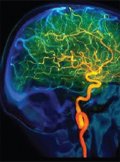The eLitMed.hu medical portal uses computer cookies for convenient operation. Detailed information can be found in the Cookie-policy.
LAM Extra for General Practicioners - 2011;3(04)
Content
[Changes in infectology over the past two decades]
[Infectious diseases and various infections are the major causes of morbidity and mortality in developing as well as in industrialised countries. Despite the advances in the past decades in our understanding of microbes, efficient treatment of diseases and preventive approaches, more than 13 million people die every year due to infectious diseases. In the past two decades, more and more new pathogens and infections diseases have been emerging and old diseases that were almost forgotten have re-emerged. There are many new diseases for which we do not have or have hardly any efficient antimicrobial drugs and no efficient vaccines. Despite an increasing frequency of multi- and panresistant microbes, the development of new antibiotics to be used against these infections is unlikely to occur in the near future. The big pharmaceutical companies have stopped the research of antibiotics. In this situation, the only option we have is to use antibiotics rationally and to take prevention and control of infections seriously, both in the outpatient system and in hospitals. Preserving the effectiveness of currently used antibiotics is in everyone’s interest and is everyone’s responsibility]
[Similarities and differences in the renal effects of statins]
[By efficiently reducing serum cholesterol level, statins significantly decrease both cardiovascular morbidity and mortality. Decreasing LDL-cholesterol level by 1% reduces coronary mortality risk by 1%, whereas increasing HDL-cholesterol level by 1% reduces the risk by 3%. At the same time, renal failure significantly increases cardiovascular events and/or mortality compared with the population mean. It is an exciting question whether statins are able to prevent and decelerate the deterioration of kidney function deterioration, preserve GFR and decrease albuminuria. Depending on the strength of their effect, statins have different cholesterol-lowering capacity (rosuvastatin and atorvastatin are especially effective). An important question is whether these differences can be detected in the renal function as well. The results of experimental data and major clinical trials (e.g. AURORA, PLANET I-II, SHARP) are often controversial. Nevertheless, statin therapy has advantages for patients with kidney diseases, although to a lesser extent than it has in the normal population.]
[Advantages of fixed Combinations in the treatment of Hypertensive patients ]
[In 60-70% of patients with hypertension, a significant decrease in blood pressure can only be achieved by a combination of antihypertensive drugs. International as well as national guidelines emphasise the numerous advantages and the importance of combination treatment. Fixed combinations are particularly advantageous, as their use improves patients’ compliance. This paper summarises the available information on the possible combinations of the nine major antihypertensive drug groups distributed in Hungary, and for details the results published on the recently approved and introduced fixed combination of telmisartan and amlodipine.]
[Acute hepatitis caused by herpes simplex virus 1]
[INTRODUCTION - Herpes simplex virus is a rare and severe disease, which is often lethal, especially in children and those who underwent transplantation. Rapid diagnostic help determines therapy and facilitates recovery of the patient. CASE REPORT - The authors present a case of a 46-year-old patient with no underlying disease, in whom the diagnosis of hepatitis caused by herpes simplex-1 virus was suggested after histological evaluation of a blind liver biopsy specimen. The diagnosis was later confirmed by immunomorphological examination. The patient’s hepatitis resolved following acyclovir therapy, but he developed nosocomial pneumonia, sepsis caused by Candida albicans and anuria. The patient recovered due the joint efforts of an infectologist, a pathologist, an intensive care specialist and a nephrologist. CONCLUSION - During examination of the patient, immune suppression was not indicated either by HIV-serology or bone marrow biopsy. thus the findings were presumably explained by a generalised infection in an immunocompetent host. In the case described, histological examination of the liver biopsy was a life-saving procedure, because it allowed timely and efficient treatment.]
1.
Clinical Neuroscience
[Headache registry in Szeged: Experiences regarding to migraine patients]2.
Clinical Neuroscience
[The new target population of stroke awareness campaign: Kindergarten students ]3.
Clinical Neuroscience
Is there any difference in mortality rates of atrial fibrillation detected before or after ischemic stroke?4.
Clinical Neuroscience
Factors influencing the level of stigma in Parkinson’s disease in western Turkey5.
Clinical Neuroscience
[The effects of demographic and clinical factors on the severity of poststroke aphasia]1.
2.
Clinical Oncology
[Pancreatic cancer: ESMO Clinical Practice Guideline for diagnosis, treatment and follow-up]3.
Clinical Oncology
[Pharmacovigilance landscape – Lessons from the past and opportunities for future]4.
5.







